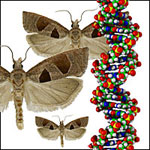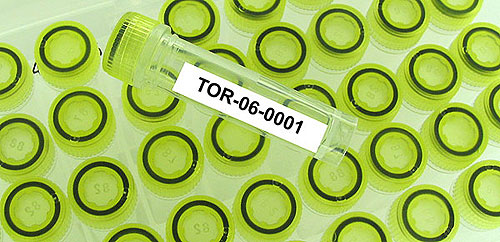
| home | catalogue | host plants | library | TORTS | tortriciDNA | about | site map |
|
Alcohol CollectionThe use of genetic data has become a necessity in modern systematic work. Molecular techniques currently require very high-grade samples of DNA or RNA in order to obtain satisfactory results, and many traditional collecting methods are not compatible with this goal. Nucleic acids degrade in dried specimens, and the extent of the degradation can be excessive depending on the collecting method and how the specimen is treated or stored. While various researchers have successfully sequenced individuals in many tortricid groups, no collection of material exists solely for this purpose. Our goal is to provide a synoptic collection of tortricid specimens suitable for molecular studies that has been assembled by, and can be utilized by, collaborators throughout the world. PurposeThe purpose of this project is to provide a synoptic collection of tortricid specimens that are specifically destined to be used in molecular studies. Collection and storage techniques will be designed to maximize the amount of genetic material that can be extracted from each specimen and the specimens and/or extracts will be available to researchers world wide. MethodsIn order to obtain the highest quality extracts, specimens need to be treated using specific methods, which are outlined here. Methods are a summary of techniques developed by Regier and Mitter, modified slightly to accommodate field conditions. Persons wishing to donate specimens may do so using their own supplies, or we will be happy to supply vials and instructions to willing collaborators (see section below). CollectionIdeally, specimens are collected as part of a larger series, deposited directly into 100% ethanol, and stored at -20° C until deposition at a permanant storage facility. While this is not always possible, the following guidelines should be observed:
StorageThe alchohol specimen library will be located at the University of Maryland in a -80° C freezer with full redundant capabilities. Spread specimens will be stored in the USNM collection and labeled with information sufficient to associate them with specimens in alchohol. Researchers wishing to send boxes or individual vials of specimens in alchohol should decant off the majority of the alchohol so that the specimen is still saturated in alchohol but no excess alchohol remains in the vial. The specimens can then be shipped without having to declare the alchohol as a flammable substance. Researchers following this method should ship specimens in a quick manner as to prevent specimens from drying before arrival at the USNM. Specimens should be placed in 100% ethanol at -80° C upon arrival at the USNM, and entered into the database by the collection curator(s).Database/WebsiteAll relavent information for each specimen, including collection data, storage conditions, taxonomy, and storage location, will be housed in a database located on this website. Researchers will be able to enter specimen data as well as view a list of the material housed in the collection. Researchers will also be able to request the use of either entire specimens or extracts through this website. Use of MaterialThe goal of the collection is to provide a resource for researchers working in tortricid systematics using molecular techniques. As a collaboration from researchers throughout the world, use of the specimens or extracts is not limited to any particular person or project as long as the project would further the understanding of relationships within the Tortricidae at any level. It is hoped that multiple specimens from many different species will be available should different researchers request the same species for different projects. If this is not the case, such as with several tribes and genera that are particularly rare or difficult to collect, the collection curator(s) will have discretion as to how the specimens are distributed. Extract aliquots could be distributed to several different researchers should there only be one specimen available of rarer groups. The collection curator(s) will work with the researchers involved to distribute material in these circumstances. Free Supplies Available!For anyone willing to donate specimens, we are happy to provide vials, boxes, and spreadsheets for entering data. Screw-top 2 ml vials with rubber O-rings will be shipped in boxes of 50 to interested persons. Each vial will be labeled as shown in the following picture, and a spreadsheet will be provided for the researcher to enter collecting and other information for each vial.
Contact InformationTo request supplies or for any other information regarding this project, please use the contact form. Specimens should be sent to the following address:
Todd M. Gilligan |
Please do not download, copy, print, or otherwise distribute any images from these
pages without the permission of the author. Contact Form.

